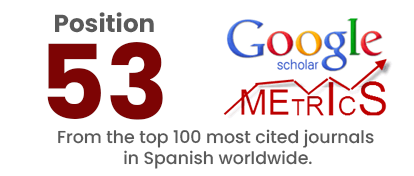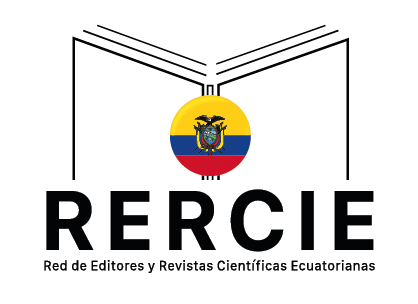Industrial recycled polymer matrix, proposed application in construction: Portoviejo and Medellín
DOI:
https://doi.org/10.36097/rsan.v1i60.2924Keywords:
Recycled industrial polymers, panels, circular economy, mechanical strength of materialsAbstract
This research is oriented towards the implementation of good environmental practices using post-industrial plastic waste as an alternative material for non-conventional construction systems. This is why it was decided to develop a matrix of recycled polymers to obtain plates that can be applied in the construction of masonry, according to the results of tensile and compressive stress, this new proposal of composite material is studied in the cities of Portoviejo and Medellin; The project consists of three phases, applying bibliographic and experimental research where low density polyethylene, high density polyethylene (PE) and polypropylene (PP) are subjected to controlled temperatures to subsequently achieve a matrix of composites that when cooled can have multiple uses such as: planks, blocks, caps, signage, chairs, among others. As a result, we found that the recycled industrial thermoplastic polymer matrix works efficiently with a 1:1:1 ratio of low density polyethylene, high density polyethylene and polypropylene, achieving deformations of 15%. This material is proposed as a 50x10x7 cm. panel which, assembled as a plate with another type of tongue and groove, can be applied as masonry for housing, wall cladding or slab relieving.
Downloads
References
Acevedo Agudelo, H., Vásquez Hernández, A., Ramírez Cardona, D. A. (2012) Sostenibilidad: Actualidad y necesidad en el sector de la construcción en Colombia. Gestión y Ambiente, 15(1), 105-117. https://repository.eafit.edu.co/server/api/core/bitstreams/8b5271f9-30b3-4979-9dc2-2bdaf46f2042/content
Alianza Basura Cero-Ecuador. (2022). Boletín de Prensa. Ecuador sigue importando miles de toneladas de desechos plásticos, sobre todo desde EEUU. https://www.uasb.edu.ec/wp-content/uploads/2022/04/Informe-Desechos-plasticos-Alianza-Basura-Cero-Ecuador-2022.pdf
Chen, J., Wang, Y., Gu, C., Liu, J., Liu, Y., Li, M., & Lu, Y. (2013). Enhancement of the mechanical properties of basalt fiber-wood-plastic composites via maleic anhydride grafted high-density polyethylene (MAPE) addition. Materials, 6(6), 2483–2496. https://doi.org/10.3390/ma6062483
Clínica Jurídica de Medio Ambiente y Salud Pública & Greenpeace Colombia (2019). Situación actual de los plásticos en Colombia y su impacto en el medio ambiente. https://greenpeace.co/pdf/2019/gp_informe_plasticos_colombia_02.pdf
Código Orgánico del Ambiente. (2017, 12 de abril). Registro Oficial Suplemento 983. https://www.ambiente.gob.ec/wp-content/uploads/downloads/2018/01/CODIGO_ORGANICO_AMBIENTE.pdf
Ecuavisa. (2022, abril 22). En Ecuador se arroja más de medio millón de toneladas de plástico cada año. https://www.ecuavisa.com/noticias/medio-ambiente/en-ecuador-se-arroja-mas-de-medio-millon-de-toneladas-de-plastico-cada-ano-BA1640892
International Bottled Water Association. (2023). Benefits of PET bottles. https://www.bottledwater.org/benefits-of-PET
López Salazar, S., & García Marín, C. C. (2020). Utilización de materiales plásticos reciclados para conformación de aglomerados de polietileno en procesos constructivos [Tesis de grado, Universidad Libre Seccional de Pereira]. Respositorio Unilibre. https://repository.unilibre.edu.co/handle/10901/23151
Ministerio del Ambiente. (2015, 4 de mayo). Acuerdo Ministerial No. 61 sobre la Gestión Integral de los Residuos Sólidos. https://www.gob.ec/sites/default/files/regulations/2018-09/Documento_acuerdo-ministerial-061.pdf
Morán, S. (2020, noviembre 10). Nada frena los plásticos de un solo uso: más de 260.000 toneladas al año en Ecuador. Plan V. https://www.planv.com.ec/historias/sociedad/nada-frena-plasticos-un-solo-uso-mas-260000-toneladas-al-ano-ecuador
Naciones Unidas. (2023). Informe de los Objetivos de Desarrollo Sostenible. Edición Especial. https://unstats.un.org/sdgs/report/2023/The-Sustainable-Development-Goals-Report-2023_Spanish.pdf
Quiñones, L. (2021, octubre 21). El plástico, que ya ha atragantado nuestros océanos, terminará por asfixiarnos a todos si no actuamos rápidamente. Noticias ONU. https://news.un.org/es/story/2021/10/1498752
Royte, E. (2019, marzo 13). ¿Es buena idea incinerar los residuos plásticos? National Geographic. https://www.nationalgeographic.es/medio-ambiente/2019/03/es-buena-idea-incinerar-los-residuos-plasticos
Ruiz Acero, J. C., Lozano, D. A., & González, J. S. (2019). Propiedades físicas y mecánicas de la madera plástica para uso en estructura de atención y prevención de desastres de la “ESMIC”. Ingeniare, (27), 31-39. https://dialnet.unirioja.es/servlet/articulo?codigo=7527271
Sangucho Barros, D. S., Velasco Cevallos, D. A., & Viera Arroba, L. P. (2023). Propiedades físicas y mecánicas de reciclados de plásticos producidos en Ecuador como material de construcción. FIGEMPA: Investigación y Desarrollo, 16(2), 58-69. https://doi.org/10.29166/rev%EF%AC%81g.v16i2.4495
U.S. Green Building Council. (2023). LEED certification. https://www.usgbc.org/leed
Wang, Q., Li, J., Zhu, X., Yao, G., Wu, P., Wang, Z., Lyu, X., Hu, S., Qiu, J., Chen, P., & Wang, J. (2020). Approach to the management of gold ore tailings via its application in cement production. Journal of Cleaner Production, 269(122303), 122303. https://doi.org/10.1016/j.jclepro.2020.122303
Zheng, J., & Suh, S. (2019). Strategies to reduce the global carbon footprint of plastics. Nature Climate Change, 9(5), 374–378. https://doi.org/10.1038/s41558-019-0459-z
Downloads
Published
How to Cite
Issue
Section
License
Copyright (c) 2024 Erika Romina Rivas, Paula Doménica Morejón, Gina San Andrés-Zevallos

This work is licensed under a Creative Commons Attribution-NonCommercial-NoDerivatives 4.0 International License.


















